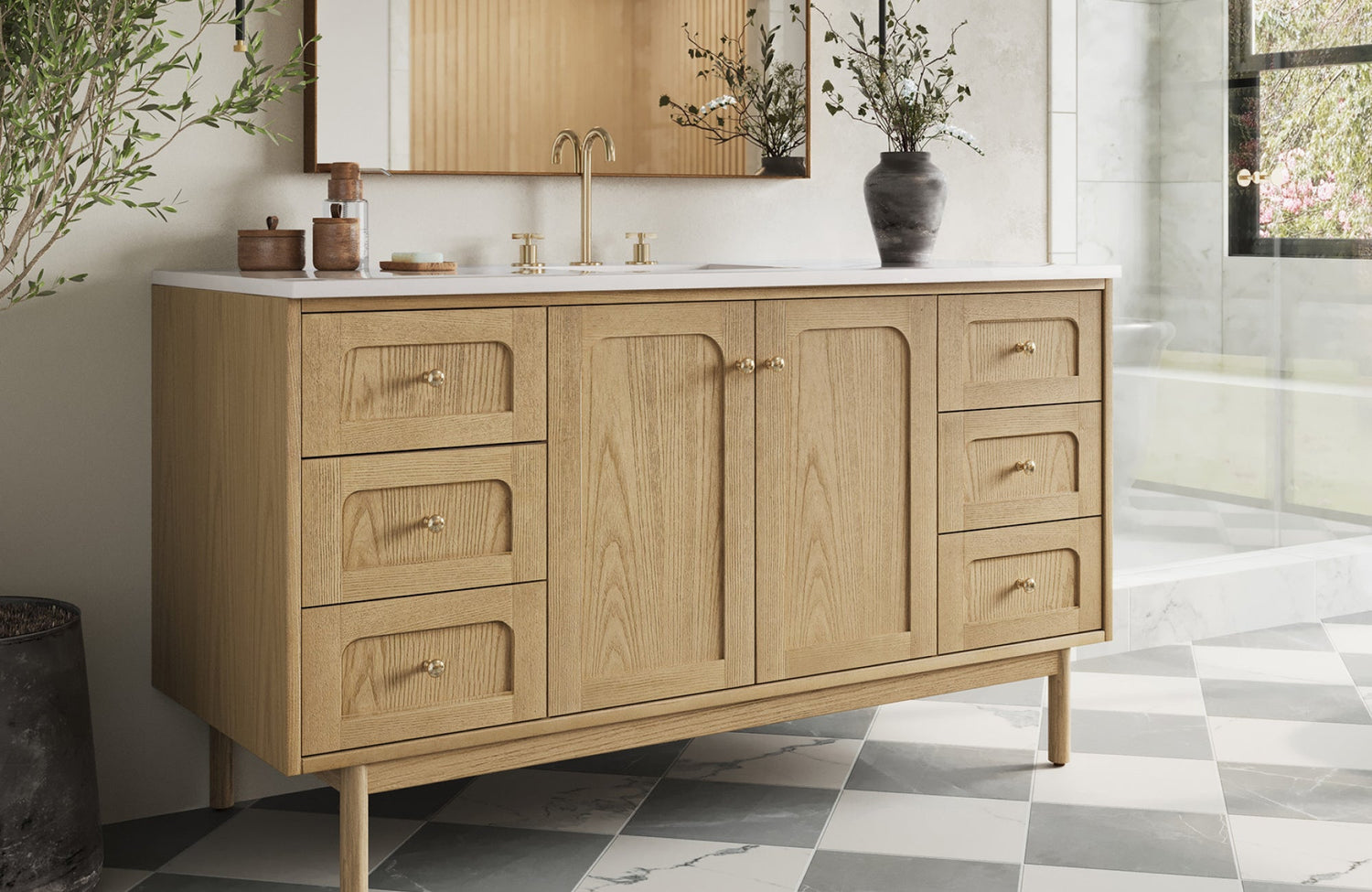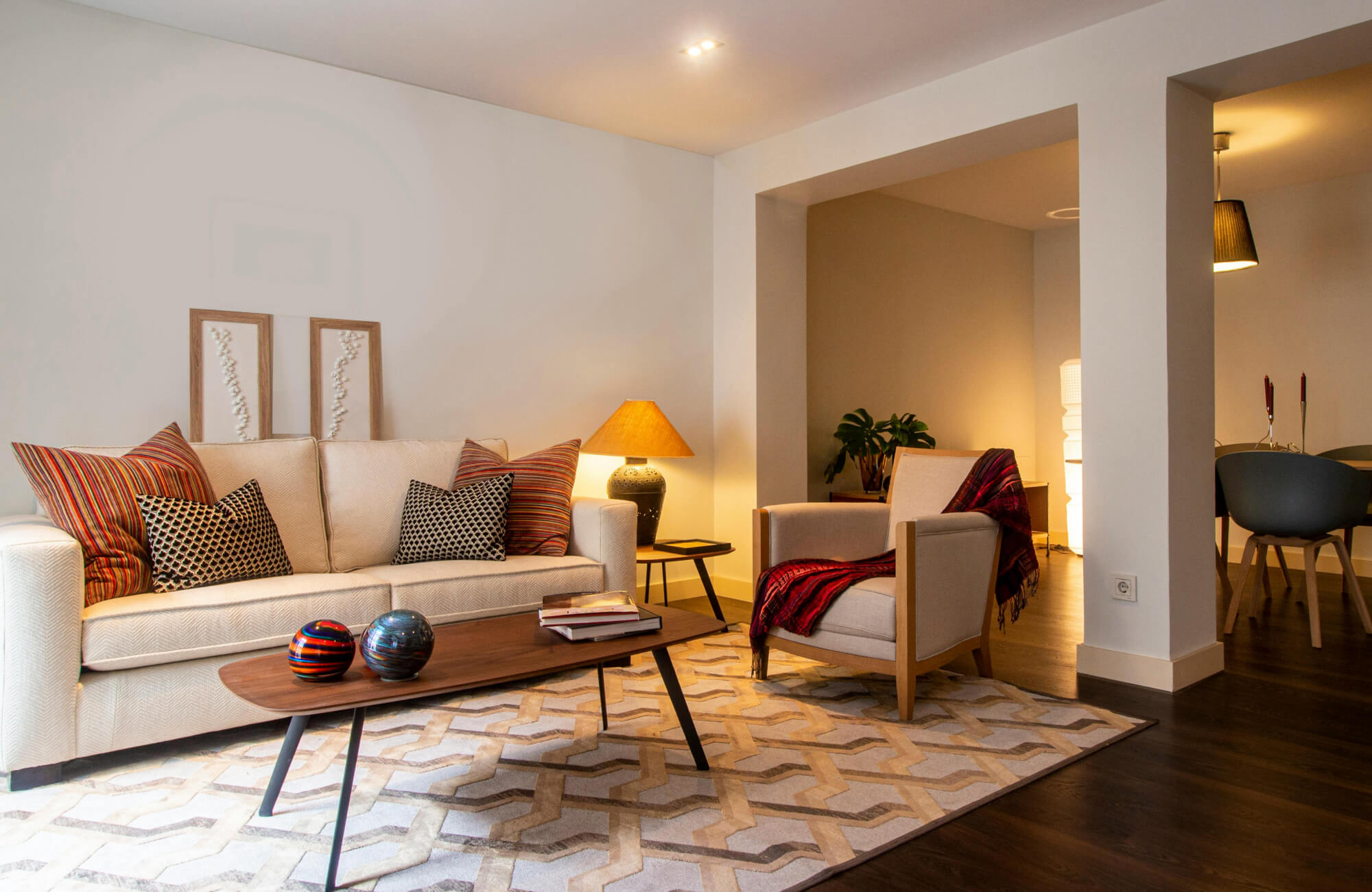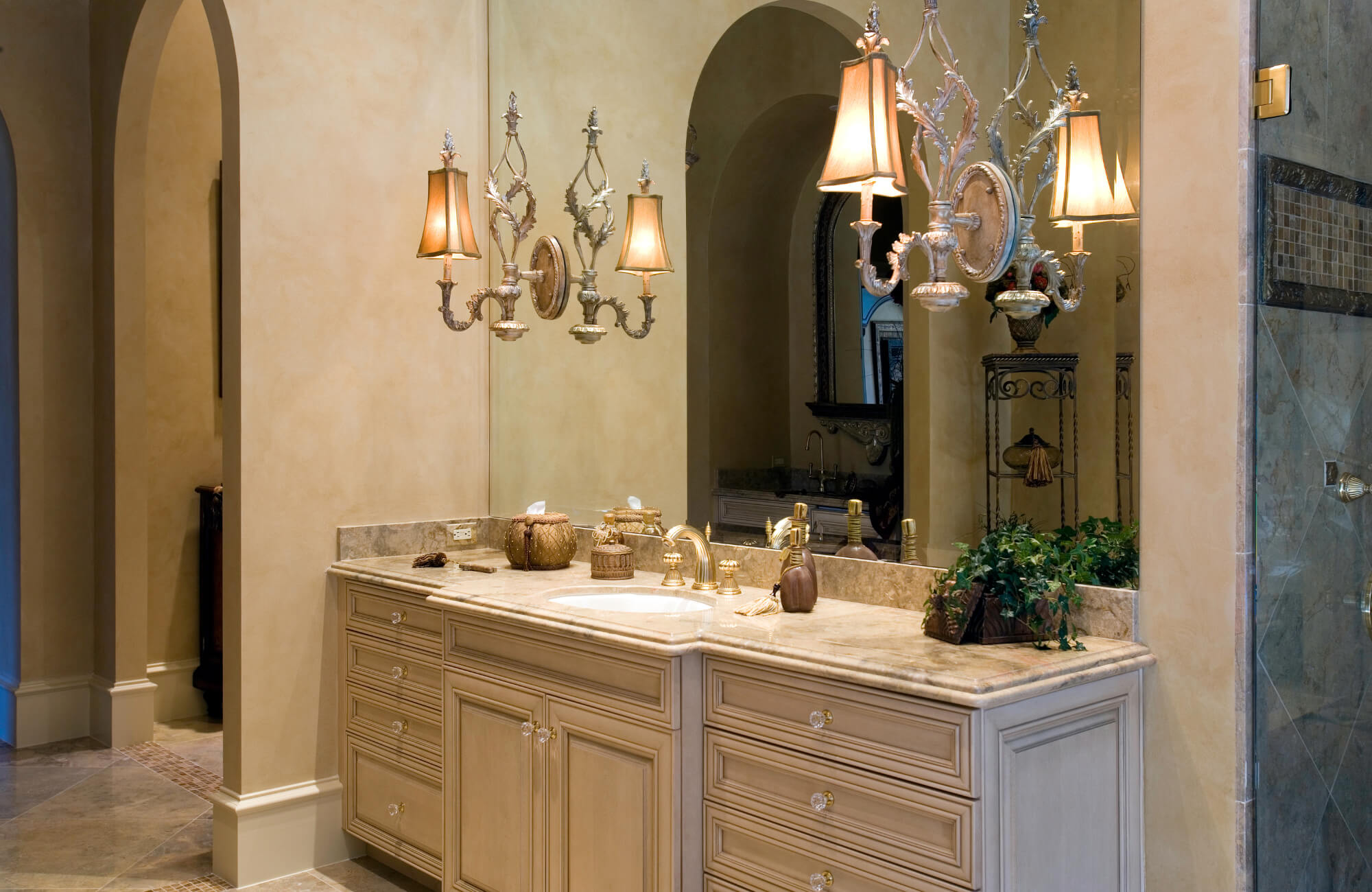Choosing the right vanity size isn’t just about squeezing it into place; it’s about creating a bathroom that works for you. The right size makes your morning routine easier, keeps everything within reach, and makes the space feel just right. Whether you're giving your bathroom a quick refresh or starting from scratch, the vanity size plays a big role in how the room functions and flows. Let’s take a closer look at the most popular vanity sizes, why they stand out, and how to choose the one that suits your space and lifestyle.
Understanding the Standard Vanity Size
Before we dive into specific recommendations, it’s also important to understand what “standard” vanity sizing refers to. These are the dimensions most commonly found in homes and showrooms; readily available, easy to install, and designed to work with typical bathroom layouts and plumbing.
In terms of width, vanities generally range from 20 to 72 inches, covering everything from narrow powder room solutions to expansive double-sink setups for primary bathrooms. Each size along this spectrum is intended to suit a different kind of space and user need.
Similarly, standard height and depth play a key role in comfort and fit. Most vanities today fall within the 34 to 36-inch comfort-height range, replacing the shorter 30- to 32-inch designs of the past. As for depth, you’ll typically see measurements between 18 and 21 inches, with shallower profiles offering better clearance in tighter layouts. Together, these dimensions form the baseline for selecting a vanity that feels natural to use and fits well within the space you have.

Small Bathroom Favorites
A small bathroom can still feel stylish and highly functional with the right vanity choice. When space is limited, it's all about finding a size that fits seamlessly without overwhelming the room.
Why 24 to 30 Inches Is Best for Small Spaces
Vanities in the 24 to 30-inch range are ideal for compact bathrooms, especially powder rooms or guest baths where you don’t need a ton of storage. A 24-inch model typically offers just enough counter space for the essentials, while a 30-inch option gives you a bit more room to work with, often including a drawer or small cabinet below for added functionality.
A great example of this balance is Edward Martin’s Abigail 30" Single Vanity in Light Natural Oak with a 3 cm White Zeus Quartz Top, as shown in the photo above. Its size makes it a natural fit for smaller layouts, but it doesn’t compromise on style or storage. The warm oak finish, elevated legs, and bright quartz surface also help the piece feel light and open, not bulky, just exactly what you want in a smaller space.
What makes this size range so practical is how efficiently it uses every inch. Smaller vanities are easier to match with well-scaled mirrors and lighting, which helps the space feel intentional and pulled together. And if your bathroom has layout quirks like a tight entryway or unusual plumbing, a compact vanity can also solve those problems while keeping the room comfortable and easy to move through.
Floating and Slim-Profile Options
If your goal is to make a small bathroom feel open and airy, floating vanities and shallow-depth models are another smart solution. Wall-mounted designs visually lift the vanity off the floor, which instantly makes the room feel larger. You still get the essentials: a sink, a place to stash a few things, but without the bulk of a full cabinet sitting on the floor.
Many of these styles come in depths of just 18 to 20 inches, which creates extra clearance in tight quarters without compromising functionality. This is especially helpful in narrow bathrooms where the space between the vanity and other features, like a door swing or shower entrance, is limited. So, if you’re working with a layout where every inch matters, floating or slim-profile vanities offer a clean, modern look that saves space and simplifies movement.
These options show that even the smallest bathrooms can also feel polished, comfortable, and thoughtfully designed, especially when you choose a vanity that works with the space rather than against it.

The Middle Ground for Shared and Guest Baths
Mid-sized vanities are the quiet heroes of most American homes. They fit effortlessly into family bathrooms, hall baths, and guest suites, offering the right balance of space, storage, and style, without stretching the layout or budget.
36 to 48 Inches Offers Balance
The 36-inch vanity is often where comfort and practicality start to come together in just the right way. It’s wide enough to support everyday routines, whether you’re brushing your teeth, getting ready for the day, or winding down in the evening, while still maintaining a modest footprint that doesn’t overwhelm the room. As you move up to 42 or 48 inches, you also gain the benefit of additional counter space, more storage, and a bolder visual presence that anchors the space with ease.
A standout example of this balance is Edward Martin’s Colton 36" Single Vanity in Sable with a 3 cm White Zeus Quartz Top, as shown in the photo above. Its clean silhouette, rich wood finish, and gently curved base bring a touch of modern elegance, while thoughtful details like smooth-glide drawers and a spacious cabinet offer the storage you need in a shared or guest bath.
This size range works especially well in bathrooms used by siblings, roommates, or overnight visitors. It hits that sweet spot; generous enough to be truly functional for more than one person, yet compact enough to fit comfortably into most standard layouts. That kind of versatility is exactly why 36 to 48-inch vanities are so popular in both new construction and renovation projects, particularly when you want an upgrade that won’t require a full overhaul of your plumbing or electrical.
What Features Typically Come With These Sizes
Vanities in the 36 to 48-inch range often come with practical features that make everyday use easier and more organized. Soft-close drawers, open shelves, and thoughtful configurations help keep essentials within reach, while pre-drilled countertops are usually ready for a single-hole faucet, though some wider models allow for more custom sink setups.
Many of these vanities also include durable construction details designed to last. You’ll find English dovetail drawers that glide smoothly on soft-close undermount slides, brushed aluminum laminate drawer bottoms for extra resilience, and integrated quartz-based sinktops that resist stains and mildew while being easy to clean.
Finishing touches like champagne brass knobs and soft-close hinges add polish, while premium coatings inside and out help protect against moisture and UV exposure. Altogether, these features combine to make mid-sized vanities not just attractive, but genuinely functional upgrades that fit comfortably into most bathrooms.

Why 60 Inches Is So Popular in Master Bathrooms
When space allows, a larger vanity can significantly improve how your primary bathroom functions each day. Among the more spacious options, the 60-inch vanity stands out as one of the top choices for master suites, and it’s easy to see why. It offers a thoughtful balance of generous size and everyday practicality, delivering an upgrade that feels substantial without overpowering the room.
Room for Dual Sinks Without Oversizing
One of the biggest advantages of a 60-inch vanity is its ability to comfortably accommodate two sinks, making it perfect for couples who share a bathroom. You can both get ready at the same time; no juggling routines or bumping elbows. Even if you opt for a single sink, the extra width also provides ample surface space and storage for towels, toiletries, and everyday essentials.
A perfect example of this thoughtful balance is Edward Martin’s Sasha 60" Double Vanity in Mid Century Walnut with a 3 cm White Zeus Quartz Top, as featured in the photo above. It pairs clean-lined elegance with everyday functionality, offering double sinks, generous drawer storage, and a rich walnut finish that brings warmth and depth to the space. The reeded drawer fronts and slim hardware keep the look refined without being over-designed, while the quartz countertop adds a polished, easy-to-clean surface.
What makes a 60-inch vanity, like Shasha, so appealing is that it delivers true dual functionality without feeling bulky. There's room for built-in organizers, personal care items, and even a little decor; yet it still maintains a clean, uncluttered profile. It’s the kind of piece that works hard without calling too much attention to itself, making it a top pick for those who want both beauty and balance in their master bath.
Ideal Layouts and Proportions
A 60-inch vanity also brings design flexibility. It often acts as the centerpiece in a well-balanced bathroom layout, especially when flanked by matching mirrors, wall sconces, or linen cabinets. Whether you’re centering it beneath a wide mirror or anchoring a double-sink setup, this size naturally complements symmetry and organization.
Additionally, it pairs beautifully with walk-in showers, freestanding tubs, and other spa-like features, bringing a sense of proportion that helps tie the whole space together. If you’re aiming to create a bathroom that feels like a retreat, not just a utility space, the 60-inch vanity offers the structure and scale to make that vision a reality.

Style Trends That Influence Size Choices
Vanity size isn’t just about how much space you have; it’s also guided by the style you want to achieve. As bathroom design continues to evolve, so do the size choices that support each look. From light, minimalist spaces to bold, vintage-inspired rooms, different aesthetics often call for specific dimensions to strike the right balance between form and function.
Minimalist Design Calls for Sleek, Compact Forms
Clean lines, neutral palettes, and visual simplicity define today’s minimalist bathrooms. To support this look, many homeowners opt for smaller, streamlined vanities that keep the space feeling open and balanced. Even in larger bathrooms, vanities in the 24- to 36-inch range, especially floating models, are often preferred for their understated presence.
A 30-inch wall-mounted vanity paired with a vessel sink and slim countertop also fits beautifully into this aesthetic, offering just enough functionality without visual clutter. The reduced footprint enhances the feeling of space, which is central to minimalist design.
Mid-Century Style Embraces Practical Symmetry
Mid-century modern bathrooms often favor furniture-style vanities with tapered legs, warm wood tones, and simple hardware. This design leans toward balance and symmetry, which typically calls for mid-sized vanities around 36 to 48 inches wide. These sizes also provide the right proportions for clean geometry without overwhelming the space.
Pairing a 42-inch vanity in walnut or teak with a quartz top and sleek pulls captures the mid-century feel while offering enough storage to meet everyday needs, making it functional without straying from the aesthetic.
Transitional Design Thrives on Versatile Proportions
Transitional bathrooms blend traditional and modern elements, which makes them highly adaptable in terms of vanity sizing. Vanities in the 48- to 60-inch range often work best here, offering enough room to support decorative touches, like paneling, turned legs, or elegant hardware, while still staying streamlined.
This style also works well with both single and double sink setups, depending on the space. The size supports the layered look of transitional design, offering room for styling without feeling bulky or too ornate.
Classic and Traditional Designs Favor Generous Dimensions
Traditional bathrooms often highlight rich materials, decorative molding, and furniture-like vanities. These designs naturally lean toward larger vanity sizes, typically 60 inches or more, to help balance the room’s formality and create a sense of permanence.
A 60- or 72-inch vanity with inset drawers, ornate hardware, and a marble or quartz countertop anchors the space, complementing heavier finishes like framed mirrors, sconces, or built-in cabinetry. In this case, size also helps reinforce the room’s sense of luxury and refinement.
Industrial and Rustic Styles Support Chunkier Profiles
For industrial or rustic-inspired spaces, vanities often feature bold materials like natural wood, matte metals, or concrete-style surfaces that add visual weight and a grounded feel. These styles lean into character and texture, which is why wider vanities, typically between 48 and 72 inches, are preferred to anchor the room with presence and purpose.
Designs in this category often include open shelving, thicker countertops, and finishes that highlight raw beauty and durability. A great example is Edward Martin’s Maxine 72" Double Vanity in Washed Natural Veneer with a Carrara Marble Top, as featured in the photo above. Its wide stance, open bottom shelf, and understated grain finish bring warmth and structure to the space, while the marble surface adds a refined contrast. This combination not only complements the rustic aesthetic but also introduces functionality that feels tailored to real, everyday use.
In spaces like this, the vanity isn’t just practical; it’s central to the room’s identity. It balances rugged charm with clean design, creating a bathroom that feels lived-in, grounded, and intentionally styled.
Choosing the Right Vanity Size
There’s no single “best” vanity size; only the one that fits your space, your routine, and the way you want your bathroom to feel. Popular widths exist for a reason, but the right choice comes down to what works best for your layout and lifestyle.
If you’re unsure where to start, we’re here to help. Reach out to us or book a personalized design consultation, and we’ll guide you toward a vanity that looks great, functions beautifully, and feels just right for your home!








